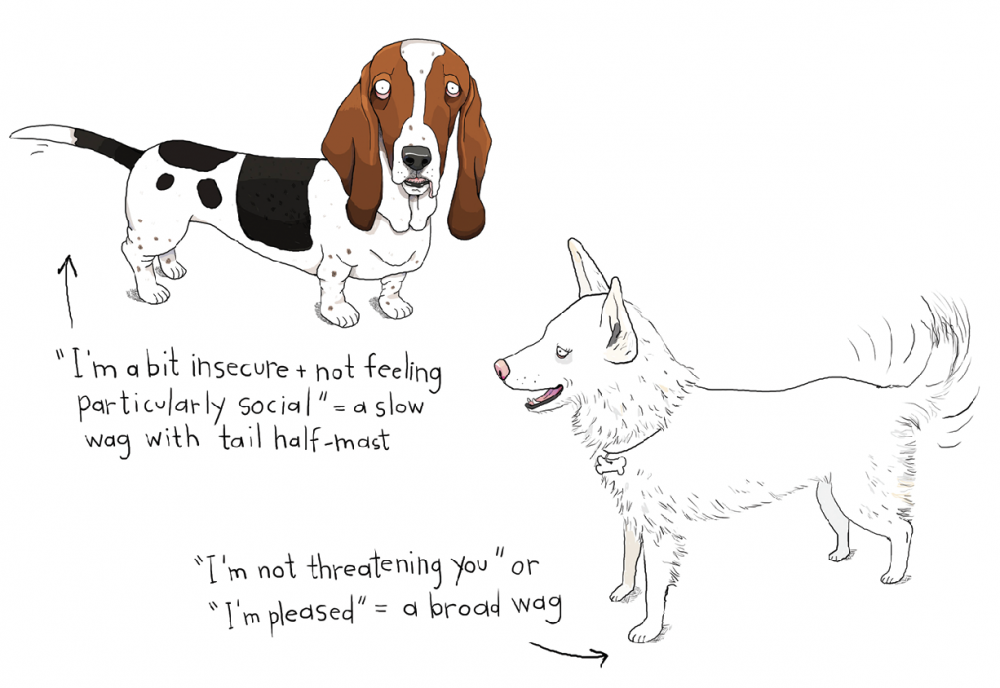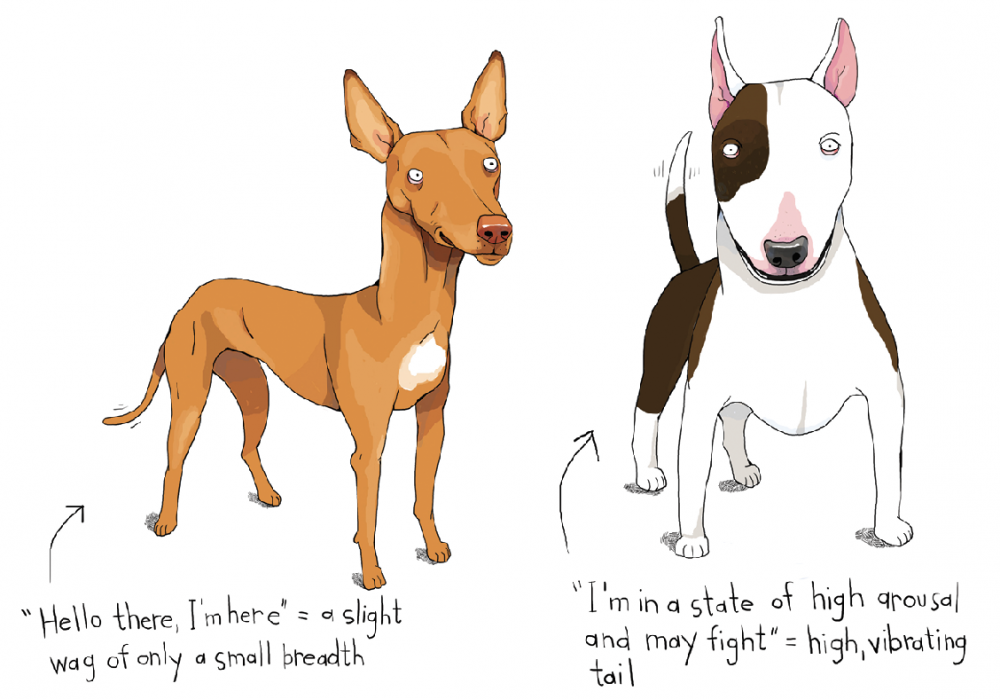
If they are playing and they play becomes a little too rough they may wag their little tails as a sort of white flag signalling to their play mates that it is time. As for adult dogs its often believed that dogs wag their tails to represent happiness or delight.

Tail wagging is a behavior closely associated with dogs who seem to engage in it more than other animals.
Why do dogs wag their tails evolution. So adult dogs tails have evolved from a balancing lever to an essential communication tool. Its also sometimes used to spread their scent. Puppies begin using the tail for communication at only a few weeks of age.
But what do your dogs tail positions mean. Interpreting Your Dogs Tail Movements. In an evolutionary light a dogs tail was primarily there for balance.
It helpedhelps them make sharp turns climb hills and stay steady when running. But as time went on it became less about balance and more about communication. Did you know that dogs are not born wagging their tails.
Tail wagging typically shows up about a month into their life when the puppies begin learning how to communicate. A wagging tail and a few licks are usually a friendly greeting from a dog. A tail lowered and between the legs could indicate fear anxiety or submission.
A slow wag could mean that a dog is. A young dog will also wag his or her tail when theyre asking another older dog for food. As for adult dogs its often believed that dogs wag their tails to represent happiness or delight.
While this isnt wrong dogs definitely do wag their tails when theyre excited or happy to the extent that the broad wagging movement represents delight pleasure or happiness its not exactly complete. This usually indicates he or she is feeling excited and particularly social. If youre getting the helicopter tail your dog is really pleased to see you.
If your dogs tail wags slightly to the right research suggests this could indicate your dog knows the person or dog and it is a wag of recognition. A tucked tail or a tail that is a lot lower but wagging slightly usually means the dog is worried. Its commonly believed that dogs wag their tails to convey that they are happy and friendly but this isnt exactly true.
Dogs do use their tails to communicate though a wagging tail doesnt. In other words a tail wag means that the dog is open to interaction not that the dog is friendly Heres another way to look at it. A wagging tail simply indicates that a dog is mentally aroused and engaged with what is going on in his environment not how he will react to whatever is going on.
Dogs dont just wag their tail to communicate with their human owners though. When puppies are first born and living in close quarters with their brothers and sisters they use their tail to signal different things to them. If they are playing and they play becomes a little too rough they may wag their little tails as a sort of white flag signalling to their play mates that it is time.
Typically when dogs are encountered with positive situations like encountering their owner dogs will wag their tail towards the right. However when dogs are faced with negative situations such as the approach of an unfamiliar dog the animal biases its tail wags towards the left. When dogs are feeling uncertain nervous or insecure particularly while around another dog or a new person they may wag their tails very slightly.
Dogs who want to signal that theyre friendly will wag their tail with abandon and will often get their hips into it too. According to experts dogs wag their tails to communicate and interact. But perhaps the question we should really be asking is how does your dogs tail wag.
And what do these types of wags actually mean. Lisa Radosta owner of Veterinary Behavioral Science in Florida previously stated A tail wag means that the dog is open to interaction not that the dog is friendly She also. It turns out that dogs tend to wag their tails to the right when they are feeling positive and relaxed while dogs tend to wave their tails to the left when they are nervous or anxious.
Whats even more interesting is that dogs recognize these differences in other dogs. Tail wagging is a behavior closely associated with dogs who seem to engage in it more than other animals. The exact reason why dogs wag their tails may not be entirely clear but it does seem to be linked with a desire to communicate information to other members of the pack.
Being inherently social animals tail wagging can provide social cues. Why do dogs wag their tails when they attack. Put simply a dog can be very upset and stressed and their tail will still wag.
In this situation the tail wag is usually fast tail carriage is high as a sign of high tension and alert and not always relaxed and cheerful. A dog can tuck their tail under in fear and still bite too. Always look for the situation to give you better context and if youre in doubt leave the dog be.
Tail wagging works well for dogs. Since canine vision is attuned more to movement than to colors or details dogs readily discern different tail wags. Evolution has also helped by producing tails that are more visible.
Some tails have color variations such as dark or light tips some are lighter on the underside and some are really bushy. Dogs will wag their tail to convey a range of emotions. Happinessnervousness feeling threatenedanxiety submission and excitementIts thought that when a dog is relaxedits tail will sit in a resting position.
This position will vary depending on the breed of dog. Why do Dogs wag their tails. Dogs just like humans have the ability to communicate.
They may not be able to speak the right words but their actions can help them express their feelings. Just like the wagging of their tails. We often see dogs move their tails as a sign of communicating what they want.
Dogs wag their tails for many reasons. The speed and movement of their tail wagging also means. Your dog runs up to greet you tail wagging enthusiastically.
Later on you notice that he wags his tail differently when hes playing with his canine friend. Tail wagging is a common dog behavior but why do dogs wag their tails. Dogs Wag Their Tails to Communicate Tail wagging is at its very base a communication method.